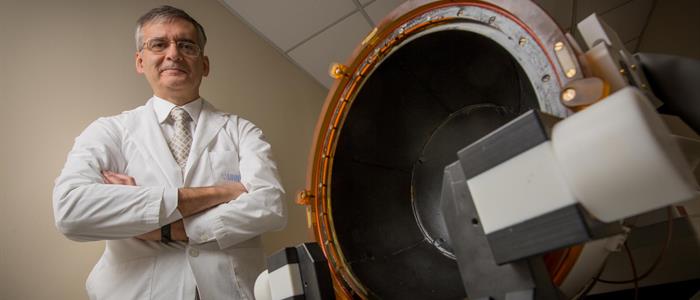to penetrate the human skull and destroy pathological tissue in the brain. The skull, though, is so strong that a normal jolt of sound waves is essentially useless. “The skull tends to block ultrasounds,” says Dr. Lozano, a senior scientist at the Krembil Research Institute and a surgeon at Toronto Western Hospital.
He and his colleagues knew, however, that ultrasound waves could make it through the skull if enough beams were used. Most would bounce off the bones, but a small fraction of the ultrasound energy would make it through. The problem? There wasn't a machine that could produce enough waves to bypass the skull.
That changed four years ago, when a medical device company, working with Dr. Lozano and others, developed a helmet-like apparatus, similar to an old salon hair dryer, which delivers 1,000 ultrasound beams into the brain. These beams can be focused on a single area of the brain and produce enough energy to destroy the problematic tissue.
And it's all done without opening the skull. "It's really a technological advance," says
Dr. Lozano. "And it's safer, effective and may reduce risk and costs."
For now, Dr. Lozano, who is a
pioneering surgeon in treating Parkinson's,
Huntington's and Alzheimer's diseases, is using this focused ultrasound technology to treat tremor, which causes people's hands to shake uncontrollably. It can be a severe problem, as the shaking can interfere with eating, washing, dressing and other daily necessities.
It is treatable, though. Typically, surgeons have to drill a hole in the skull and then put a needle into the brain to get rid of the problematic tissue. Another option is deep brain stimulation, where surgeons place an electrode on the brain, then connect it to a pacemaker in order to electrically modify the activity of the malfunctioning area. Naturally, any surgery requiring the brain to be touched, whether it's with a needle or an electrode, has a risk. Complications include hemorrhaging and infection.
Using focused ultrasound technology eliminates these problems. Now, Dr. Lozano's patients are put through a magnetic resonance imaging (MRI) machine, while wearing the ultrasound helmet. The MRI allows him to pinpoint where on the brain ultrasound beams should be focused. The beams then burn the offending tissue. It's similar to using a magnifying glass used to burn a piece of paper with the sun on a hot summer day, he explains.
The zapping process takes about an hour, with two to three hours of preparation time beforehand. It works so effectively, and happens so quickly, that the patient, who is awake during the entire procedure, should have no tremors in the affected arm by the end of that hour. In fact, patients are kept awake because Dr. Lozano wants to see those tremors disappear, to make sure that he's focusing the beams in the right place. "As soon as we do these procedures, those tremors stop," he says. "And they appear to stay gone in most patients."
The technology is still in its early days, which is why Dr. Lozano only uses it to destroy tissue on one side of the brain. In many cases, there's bad tissue on both sides, which creates tremors in both hands. More testing needs to be done to ensure that using 1,000 beams twice, for both sides of the brain, is safe.
He does think the focused ultrasound technology will have much further reaching applications in the future, helping to eliminate epilepsy and treat Alzheimer's. With
Alzheimer's, patients develop protein deposits in the brain that are thought to cause problems with memory and cognitive functions. In preclinical models of Alzheimer's, ultrasound can be used to clear those deposits. Dr. Lozano is currently collaborating with other neuroscience researchers in Toronto on an Alzheimer's-related ultrasound trial to see if this technique could be useful in patients.
Today, Dr. Lozano, who holds the R. R. Tasker Chair in Stereotactic and Functional Neurosurgery and the Dan Family Chair in Neurosurgery, can only do one or two procedures a month, as the procedure is not yet covered by the government. Once that changes, and he hopes it will soon, he'll likely be performing these daily. "We want to help more people," he says. "People see it as not as dangerous, and therefore those who may have not wanted to go through surgery before, [now] find this more appealing. It's potentially going to have a major impact on people's lives."

